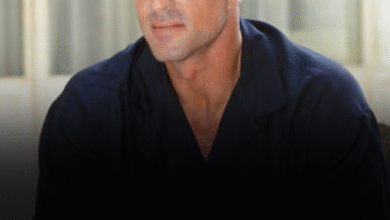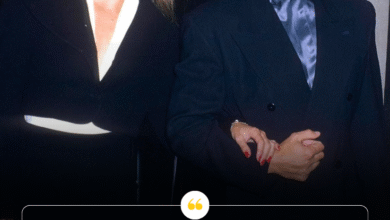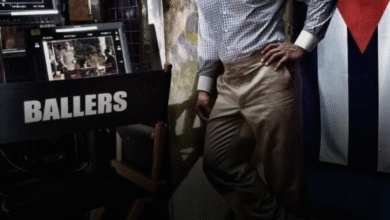Clint Eastwood Reveals the Surprising Actors Who Shaped His Filmmaking Genius!
OPINION: This article may contain commentary which reflects the author's opinion.
lint Eastwood’s career — from rugged gunslinger in The Good, the Bad and the Ugly to Oscar-winning director of Unforgiven and Million Dollar Baby — is a study in evolution. While Eastwood often plays stoic, self-reliant characters on screen, off-screen he has always been a keen observer, learning critical lessons from the actors he collaborated with throughout his remarkable journey. Though he rarely spells it out, a close examination of his career reveals how certain co-stars left lasting imprints on his craft, influencing both his acting and his famously efficient directing style.
Early Career and the Power of Observation
Eastwood’s first taste of Hollywood came with television’s Rawhide (1959–1965), where he learned the value of preparation and speed — lessons reinforced by tight TV production schedules. However, it was his later collaborations on the big screen that truly shaped his approach to performance and filmmaking.
Key Collaborations and Lessons Learned
| Film | Co-Star | Lesson Learned |
|---|---|---|
| Million Dollar Baby (2004) | Hilary Swank | The power of physical and emotional preparation. |
| Million Dollar Baby (2004) & Unforgiven (1992) | Morgan Freeman | The value of spontaneity and authentic, single-take performances. |
| Blood Work (2002) | Jeff Daniels | Efficiency and readiness under production pressure. |
Hilary Swank: Dedication Beyond the Script
On Million Dollar Baby, Eastwood was reportedly stunned by Hilary Swank’s level of commitment. Swank trained intensely for four hours a day over four months, gaining 18 pounds of muscle to convincingly play a professional boxer. Eastwood, who already appreciated a strong work ethic, saw firsthand how rigorous preparation could elevate an actor’s performance without sacrificing naturalism. Swank’s approach reinforced Eastwood’s belief in creating a relaxed set where serious preparation meets spontaneous execution.
Morgan Freeman: Trusting the Moment
Morgan Freeman became a cornerstone of Eastwood’s work, particularly in Unforgiven and Million Dollar Baby. Freeman’s ability to deliver rich, nuanced performances — often in a single take — deeply resonated with Eastwood. Rather than intellectualizing scenes, Freeman trusted instinct and presence, a quality Eastwood admired and mirrored in his directing. He learned that creating an environment where actors could trust their instincts often produced the most truthful performances.
In multiple interviews, Eastwood reflected on how scenes with Freeman — and Brian O’Byrne — often required only one take, highlighting the director’s growing preference for capturing organic, in-the-moment work rather than over-rehearsed performances.
Jeff Daniels: Efficiency in Action
While working on Blood Work, Jeff Daniels, a seasoned actor himself, praised Eastwood’s swift, no-nonsense directing style. Daniels credited Eastwood with teaching him to “hit it” on the first take — an invaluable skill in both film and television where time and budgets are tight. While Daniels learned this from Eastwood’s directing, it underscores Eastwood’s earlier understanding of efficient, effective acting gleaned from collaborators like Freeman and his early television days.
Influence of Directors, Too
Though the focus here is on actors, Eastwood’s time with directors like Sergio Leone (The Dollars Trilogy) and Don Siegel (Dirty Harry) shaped how he interacted with co-stars. Leone’s visual storytelling and Siegel’s practical, no-frills style taught Eastwood to give actors the space to explore their roles — a lesson he applied when working with ensemble casts, trusting performers like Freeman and Swank to bring authenticity without micromanagement.
The Broader Impact on His Directing Style
Today, Clint Eastwood’s directing is marked by minimal takes, a business-like pace, and a deep respect for actors’ instincts — all principles shaped by the talents he observed and worked alongside. Tom Hanks, who worked with Eastwood on Sully (2016), once joked that the sets felt so serious and efficient that “you didn’t even hear the word ‘action.’” This environment was a direct result of Eastwood’s lifelong study of actors who could “find it” quickly, honestly, and powerfully.
Conclusion: Learning by Watching, Leading by Trusting
Clint Eastwood didn’t just carve his name into Hollywood by forging ahead alone. He sharpened his craft by quietly learning from those around him — actors who showed him that preparation, spontaneity, and trust were the true keys to unforgettable performances. In many ways, the secret behind Eastwood’s enduring success is simple: he never stopped being a student, even as he became a master.



